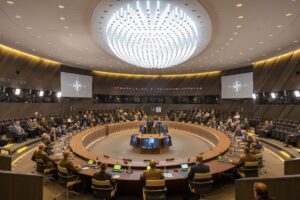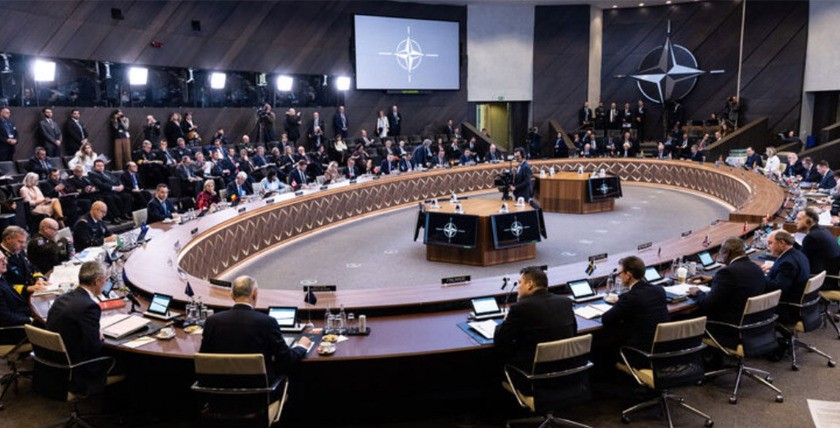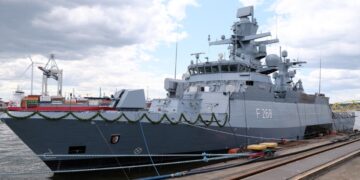One outcome of the NATO Council of Defence Ministers on 14 and 15 February 2023 is the establishment of a coordination cell for the protection of critical underwater infrastructure. One of the few details from the announcement by NATO Secretary General Jens Stoltenberg was the announcement of the head, retired German Lieutenant General Hans-Werner Wiermann. He was Director General of the International Military Staff at NATO Headquarters in Brussels until July 2022. According to Stoltenberg, the centre will identify weaknesses, facilitate cooperation with industry and bring together key military and civilian players. For the NATO summit in Vilnius (11-12 July 2023), the Secretary General announced a discussion on the protection of critical underwater infrastructure.
The Critical Undersea Infrastructure Coordination Cell will be located at NATO Headquarters. The acronym UICC stands for Undersea Infrastructure Coordination Cell. With this new organisational element, NATO hopes to achieve a better exchange of existing procedures and the use of innovative technologies to optimise the safety of submarine infrastructure.

Lieutenant General Hans-Werner Wiermann, Director General of the NATO International Military Staff (DGIMS). Photo: NATO
Resilience
Two years after the presentation of a report warning of shortcomings in the resilience of critical infrastructure in the Alliance and four months after the sabotage of the Nordstream pipelines, the defence alliance is picking up speed on the threat to critical infrastructure. The establishment of the Submarine Infrastructure Coordination Cell can only be a first step towards strengthening the resilience of critical infrastructure. At the NATO summit in 2016, "resilience" was identified as a priority for the Alliance. As a result, the basic requirements for resilience were addressed. Increasingly, civilian infrastructure, civilian services and resources, telecommunications, cyber threats against civilian targets, the security of supply chains, the risks of foreign ownership and foreign control came into the focus of resilience considerations.
In a first culminating point, the defence ministers discussed the report on resilience in the Alliance in October 2020. The (non-public) report analyses the state of civil resilience in the member states. It analyses energy supply, means of transport and communication as well as other areas of public life to determine how impaired continuity of civilian functions can affect military operations in times of crisis. The Military Committee was subsequently tasked with drawing up recommendations to strengthen cooperation and coordination with the private sector.
Coordination seems necessary
NATO-internal.

Special Meeting of the NATO Military Committee. Photo: NATO
One aspect of the work of the new coordination cell will be the pooling of responsibilities and expertise, which is not only organised differently at a national level. Even within the alliance, competences relating to the underwater sector are spread across different departments and centres of excellence. The Centre for Maritime Research and Experimentation in La Spezia, for example, is a NATO research and technology centre dedicated to military aspects of marine research. At the Centre of Excellence for Operations in Confined and Shallow Waters in Kiel, the Underwater Warfare Capability Group strives to develop and improve the capabilities required for underwater warfare. In Vilnius, the NATO Energy Security Centre of Excellence deals with operational energy security issues. To name just a few examples of the scattered expertise.
member states.
Outside of NATO, there are national services for the protection of critical infrastructure. For example, the National Crisis Centre (NCCN) coordinates the security and protection of critical infrastructure in Belgium. CISA, the Cybersecurity and Infrastructure Security Agency of the United States, is concerned with "defence against today's threats" in order to "work together to build a more secure and resilient infrastructure for the future".
EU.
The EU Commission has developed a Critical Infrastructure Warning and Information Network (CIWIN). It is intended to provide an internet-based multi-level system for the exchange of ideas, studies and best practices for the protection of critical infrastructures. The Critical Infrastructure Resilience Directive (CER Directive) has also been in force in the EU since June 2022. It enables regulations that "strengthen the resilience of critical infrastructure to a range of threats such as natural hazards, terrorist attacks, insider threats or sabotage, as well as public health emergencies such as the recent COVID-19 pandemic".
Following their joint meeting on 11 January 2023, NATO Secretary General Jens Stoltenberg and the President of the European Commission, Ursula von der Leyen, announced the establishment of a task force for resilience and critical infrastructure protection.
Retired General Wiermann can only hope that the Ariadne's thread, which appears to be necessary for orientation in this labyrinth, is available on the supply route. And that it can be made accessible to him.












0 Kommentare